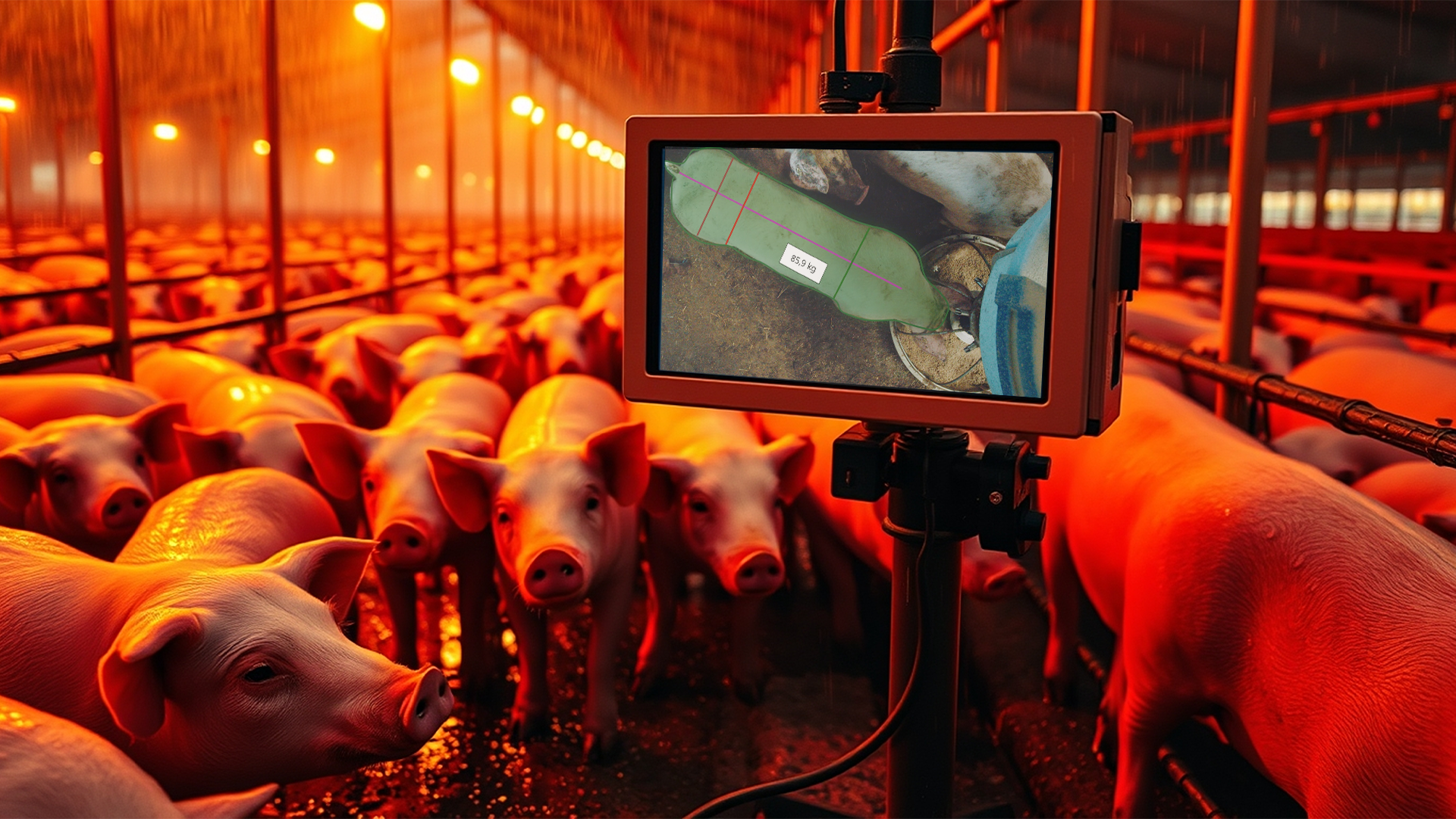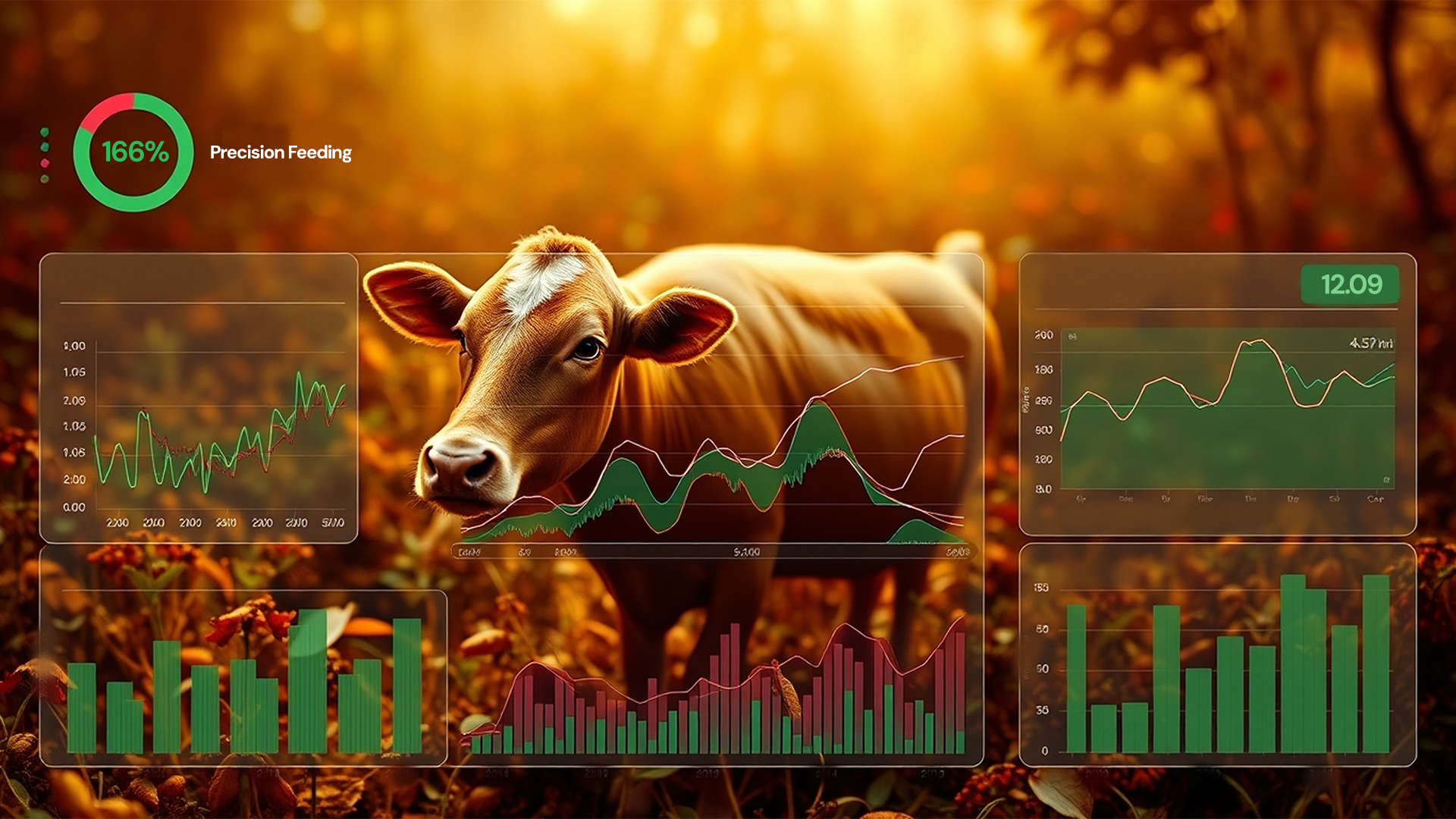Optimal feeding and a suitable environment are key to raising livestock as healthy as possible. But how can you detect if something goes wrong? AGRI-FOOD.AI is here to help!
AI can be applied to various aspects of animal husbandry, including breeding environments, feeding, disease prevention and control, behavior monitoring, and animal welfare. Let’s take a quick tour of the future of animal farming—which is already here with us.
Monitoring Breeding Environments
AI enables real-time monitoring of critical environmental factors such as temperature, humidity, light, and harmful gases, which are essential for optimizing livestock growth conditions. By installing proper sensors and developing AI software to collect and analyze data, the system can quickly detect changes, address anomalies, and provide actionable insights on modifying protocols to create the ideal environment. This approach offers greater precision and efficiency than traditional manual methods. Our PigBrother system provides all the information you need to maintain optimal growth conditions.
Precision Feeding
AI-driven precision feeding ensures timely, quantitative, and tailored nutrition for livestock. By leveraging physiological data and scientific calculations, AI determines feed requirements and dynamically adjusts to meet nutritional needs at various stages of growth. This method surpasses traditional feeding approaches in both efficiency and accuracy, paving the way for precision livestock nutrition. Machine learning algorithms analyze millions of data points to predict feed efficiency or detect early signs of illness. These systems continuously improve with every data input, offering increasingly precise recommendations.
With PigBrother, you receive a real-time data stream on fattening and feed consumption, allowing you to tailor feeding to your livestock’s needs—without the need to weigh individuals one by one. The system divides the facility into clusters, monitors growth within each cluster, and calculates the optimal quantity and quality of nutrition required. These compact machine vision sensors will become your best friend in optimizing the feeding process.

Animal Welfare and Behavior Monitoring
Machine vision is also an invaluable tool for behavior monitoring. AI employs technologies like audio and visual analysis to observe livestock behavior and welfare. This automated and detailed approach supports healthy farming practices while offering insights beyond what manual observation can achieve.
With PigBrother, you can detect aggressive individuals as soon as they begin biting or bullying others, preventing the outbreak of tail-biting before it becomes widespread. By separating problematic animals, the rest can live and breed in peace, promoting a healthier and more harmonious environment.
Disease Prevention and Control
AI enhances early disease diagnosis by enabling intelligent, remote diagnostic and treatment systems. Utilizing machine learning, big data, and cloud computing, AI provides timely warnings and facilitates remote diagnosis, image analysis, and epidemic control. These capabilities significantly improve disease management compared to traditional methods.
At AGRI-FOOD.AI, our experts are ready to provide tailored solutions for your specific needs. We can develop disease control systems customized to your farm’s requirements.
Economic Benefits
AI significantly enhances production efficiency and economic returns in animal husbandry. By replacing manual labor with intelligent AI solutions and sensors, farmers can reduce labor costs, improve feed utilization, and innovate feed production. This leads to better animal health, improved digestion, and optimized feed suitability, ultimately increasing profitability.
When you install an AI system on your farm, you can observe improvements in efficiency day by day. Whether you’re physically present or working remotely from your porch via cloud platforms, you’ll have full control over your operations.
Smart Livestock Cloud Platforms
AI integrates all aspects of livestock management—such as breeding, feeding, and disease control—into a cloud-based platform. This system provides real-time updates on the condition of your animals and facilitates knowledge-sharing with others.
By connecting to this “cloud-end” system, you can learn from the experiences of other farmers while avoiding costly mistakes. These interconnected computer networks, enhanced by human collaboration, revolutionize farming, software development, and machine learning globally.

Intelligent Equipment Development
Installing sensors and AI is just the first step toward the future. Imagine a world where AI accelerates smart animal husbandry through advanced devices like health monitoring systems, breeding robots, and automated manure treatment systems. These innovations streamline farm operations, enhancing productivity and sustainability.
And don’t worry about AI replacing human jobs entirely—while AI handles data collection and analysis, humans make the final decisions. This allows you to use your workforce more effectively and create high-tech job opportunities for the next generation, who may prefer working in tech-driven environments over traditional facilities.
Sustainability benefits
AI can significantly reduce the environmental impact of livestock farming by optimizing feed conversion ratios, which lowers methane emissions per kilogram of meat produced. By optimizing feed composition and quantity, AI reduces these inefficiencies, improving digestion and minimizing methane emissions per animal. This not only helps the environment but also boosts productivity and profitability, tying back into the economic benefits section. lets’ see how improper feed contributes to higher methane emissions!
First, ruminants. Ruminants like cattle and sheep produce methane as a natural byproduct of digestion (enteric fermentation). If their feed lacks the right balance of nutrients, particularly in fiber and protein, their digestive system must work harder to break down food, resulting in increased methane production. In addition, poorly formulated or low-quality feed is harder to digest, prolonging fermentation time in the rumen. This inefficiency not only reduces the energy available for the animal but also increases the production of methane and other greenhouse gases.
Second, the over- and underfeeding. Overfeeding protein leads to excessive nitrogen waste, while underfeeding energy results in inefficient digestion. Both can contribute to imbalances that exacerbate methane emissions per unit of milk or meat produced.
Third, imbalanced diets. Diets that are too high in fibrous plants or low in easily digestible carbohydrates lead to higher fermentation rates, increasing methane output. Precision feeding powered by AI ensures the diet is balanced, promoting optimal digestion and reducing emissions.
And finally, wasted feed resources.When feed isn’t tailored to the animal’s actual nutritional needs, more feed is required for the same production output. This inefficiency means more crops grown for feed (often using fertilizers, which also emit greenhouse gases), indirectly adding to the carbon footprint of livestock farming – and burden your purse with superfluous expenses.
Comparing Benefits and Investment
The AI-systems are cost-effective and not exclusive high-end products. In a small-scale farm, by investing the equivalent of one or two worker’s annual wage into developing and installing a sensor–AI system, you can reap long-term profits year after year. With automated processes, you’ll need fewer workers—but in higher-quality roles.
 2025-01-31
2025-01-31  PODCAST
PODCAST
 share
share



 Our website uses cookies
Our website uses cookies